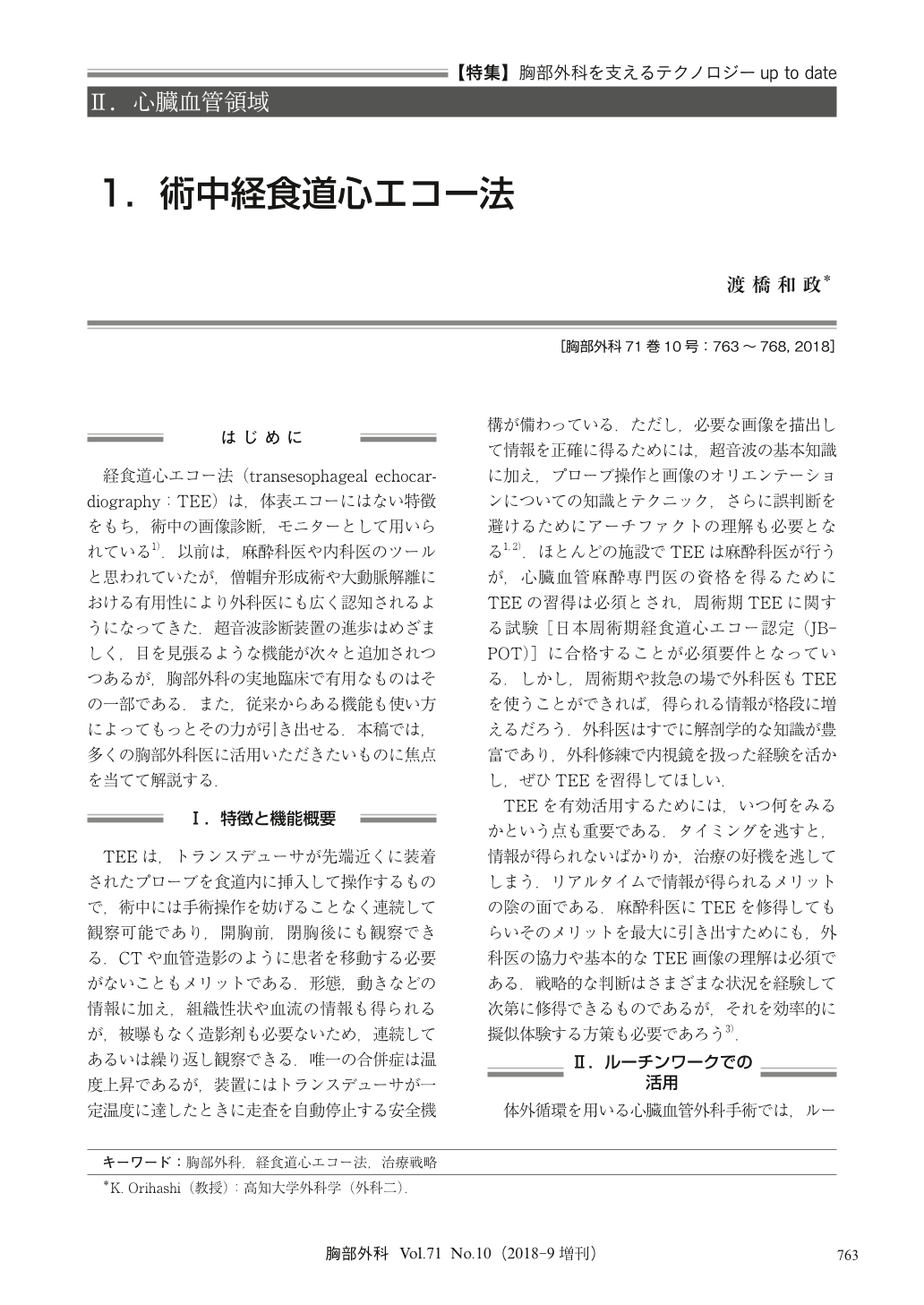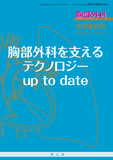Japanese
English
- 有料閲覧
- Abstract 文献概要
- 1ページ目 Look Inside
- 参考文献 Reference
経食道心エコー法(transesophageal echocardiography:TEE)は,体表エコーにはない特徴をもち,術中の画像診断,モニターとして用いられている1).以前は,麻酔科医や内科医のツールと思われていたが,僧帽弁形成術や大動脈解離における有用性により外科医にも広く認知されるようになってきた.超音波診断装置の進歩はめざましく,目を見張るような機能が次々と追加されつつあるが,胸部外科の実地臨床で有用なものはその一部である.また,従来からある機能も使い方によってもっとその力が引き出せる.本稿では,多くの胸部外科医に活用いただきたいものに焦点を当てて解説する.
Transesophageal echocardiography (TEE) provides real-time information on both morphology and hemodynamics without radiation exposure or contrast media, interruption of surgical procedures, or need for transferring the patient to other division, and thus can be used as intraoperative monitoring as well as diagnostic imaging. TEE is helpful for confirming the adequacy of routine surgical procedures, ruling out an occurrence of unexpected adverse events, or even navigating the manipulations of cannulae and catheters. In mitral valve repair, TEE assessment is essential for secure success and making a decision of 2nd pump run with a strategy for re-repair. In acute aortic dissection, TEE is often the only information source for making treatment strategy or detecting unexpected events. TEE provides unique information on properties of tissues, thrombus, or blood, which cannot be identified even with fluoroscopy, thus TEE is to be used efficiently in the hybrid operating room (OR). In thoracic surgery, TEE is helpful for assessing an invasion of tumor to the adjacent structures including the aorta or heart. With all these capabilities of TEE, it should be fully utilized to optimize the outcomes of thoracic and cardiovascular surgeries.

© Nankodo Co., Ltd., 2018


